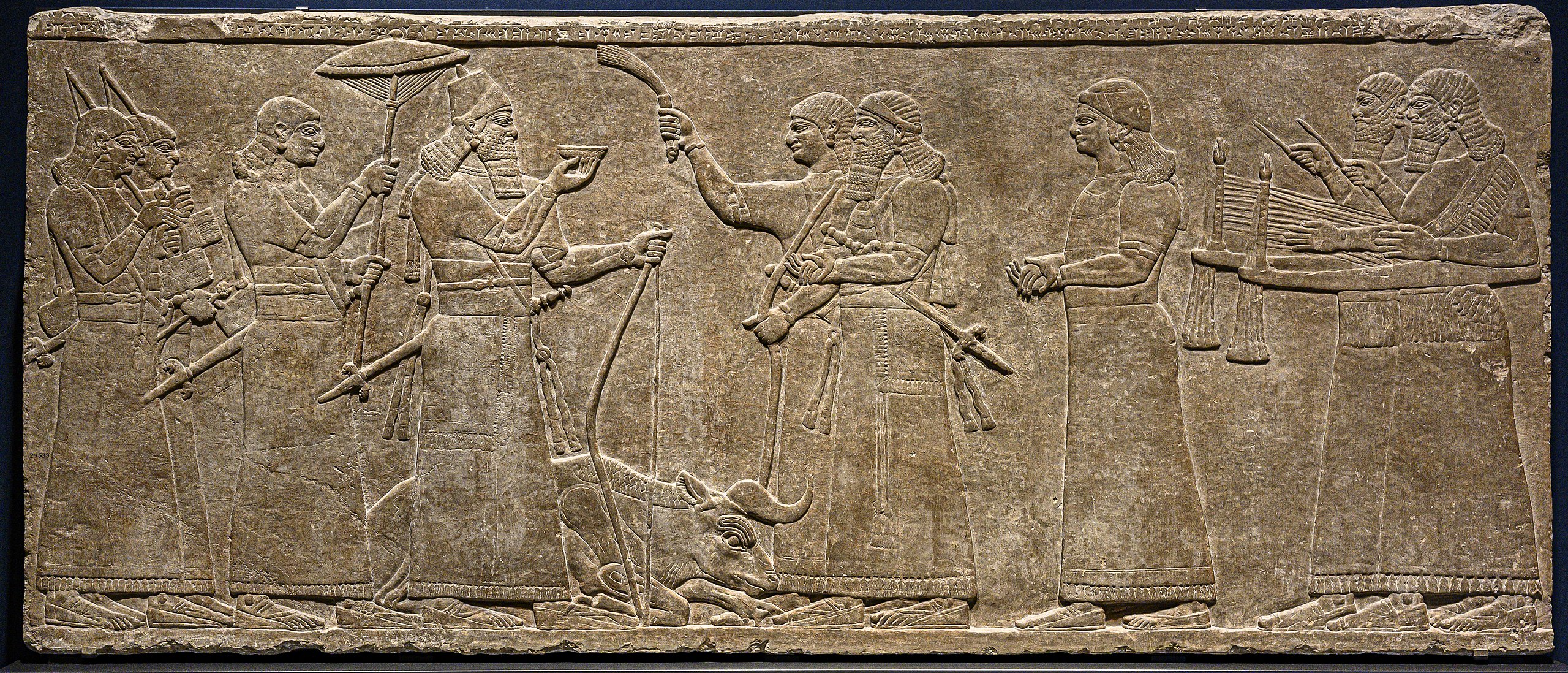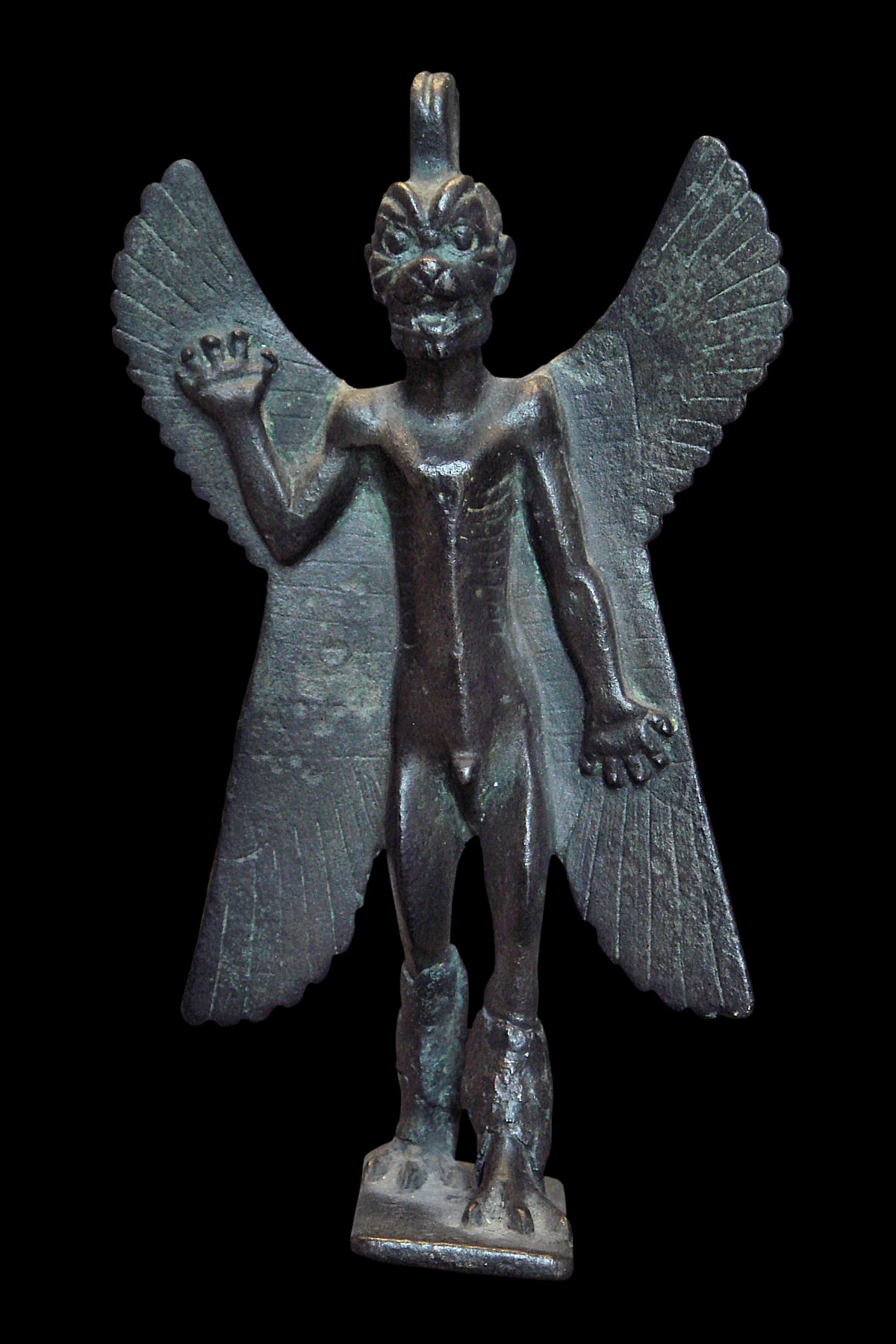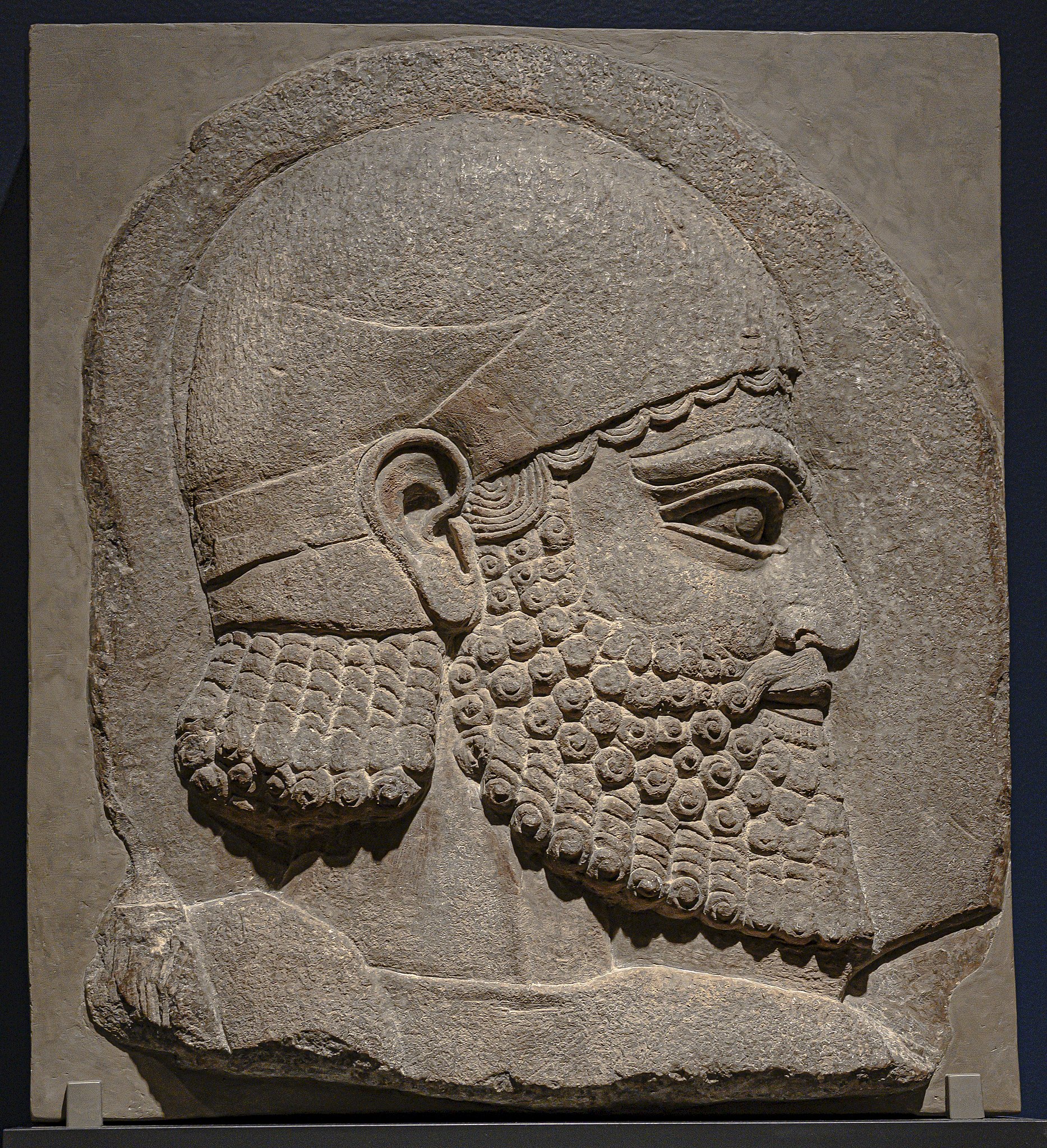Artifacts from ancient Mesopotamia are on display at Los Angeles’ Getty Villa, and will be featured in two exhibits in coordination with the Louvre Museum in Paris and the British Museum. The importance of these works of art has increased tremendously in light of the recent destruction, by Islamic State, of many of the remaining ancient artifacts in Iraq and Syria.
A selection of sculptures and reliefs from the ancient Near East are currently on loan from the British Museum and the Musée du Louvre to the Getty Villa, one of two locations of the J. Paul Getty Museum. These works of art have been divided between two exhibitions at the villa: Assyria: Palace Art of Ancient Iraq, an exhibition of stone reliefs from the palaces in Iraq, excavated in the 19th century, on long-term loan from the British Museum, runs through Sept. 5, 2022; Mesopotamia: Civilization Begins, drawn primarily from the Louvre’s great collection, is on display through Aug. 16, 2021.

Celebration after a Royal Bull Hunt, Assyrian, 875–860 BCE, Kalhu (Nimrud), Northwest Palace, reign of Ashurnasirpal II, gypsum. British Museum, London. (Allan Gluck/Wikimedia Commons)
The Getty’s preservation of and reverence for the Near East’s ancient treasures come at a time when the region’s antiquities are under threat of annihilation at the hands of terrorist groups, and theft by criminal organizations.
Jeffrey Spier, the senior curator of antiquities at the Getty Museum, told the Media Line that Mesopotamian artifacts have been, for decades, particularly susceptible to theft and destruction. “The Iraq war saw the damage and the looting of the Baghdad Museum and elsewhere,” he said. And more recently, the artifacts were threatened by “the deliberate destruction inflicted by ISIS, which sought to destroy many monuments in Iraq and Syria. … Sites such as Palmyra in Syria and Nineveh and Hatra in Iraq suffered terrible damage to ancient buildings and other monuments, which can never be restored,” Spier said. “Some museums, notably Mosul, were totally destroyed.”
Spier said museums had only a very limited ability to combat this destruction and the illicit trade in stolen artifacts. “There is little museums can do to prevent the sort of destruction occurring in the Middle East, aside from showing exhibitions that might make the public more aware of the importance of these ancient cultures,” he said.

Statuette of the Demon Pazuzu, Neo-Assyrian period, 934-610 BC, bronze. Musée du Louvre, Department of Near Eastern Antiquities, Paris. (PHGCOM/Wikimedia Commons)
“Although the Getty exhibitions do not focus on the recent destruction, they do mention what is happening, and I think this does impress on visitors how precious the works are.” This is especially important to Spier. “An appreciation for the skill of ancient artists and for the beauty of the works of art themselves” will lead to “a better understanding of an ancient empire that continues to impact the present,” he said.
The Getty has paid special attention to those who are directly linked to the nation in the Near East most greatly affected by the tragedy of artifact destruction and degradation. “We have reached out to, and had visits from members of, the Iraqi community,” Spier said. “Members of the Assyrian Students Association have organized visits for groups of young people on several occasions.” In addition, the Iraqi consul general in Los Angeles, Dr. Salwan Sinjaree, visited both exhibitions with consulate staff members and posted the visit on Twitter.

Head of a Bearded Man, Assyrian, 710–705 BCE, Dur-Sharrukin (Khorsabad), Royal Palace, reign of Sargon II, gypsum. British Museum, London. (Allan Gluck/Wikimedia Commons)
Souna Hashim of the Iraqi Consulate General in Los Angeles confirmed this solidarity with the Iraqi community. She told the Media Line, “The Getty Museum displayed Iraqi heritage (Assyrian era) at its best.”
Hashim said that “the government of Iraq keeps its heritage as its top priority,” and has pushed for UNESCO to “put the Citadel of Erbil on the World Heritage List, as well as the Marshes of Iraq, Uruk city, and Babylon’s Hanging Gardens.” Prioritizing Iraq’s cultural heritage sites came as a result of Islamic State’s recent occupations in the region. “Since ISIS emerged in Iraq in 2014, they deliberately destroyed cities that fell under their grasp,” she said, starting with heritage sites “under the pretext of Islam forbidding idols.”
Jacob Sagert is a student at Pepperdine University and an intern in The Media Line’s Press and Policy Student Program.